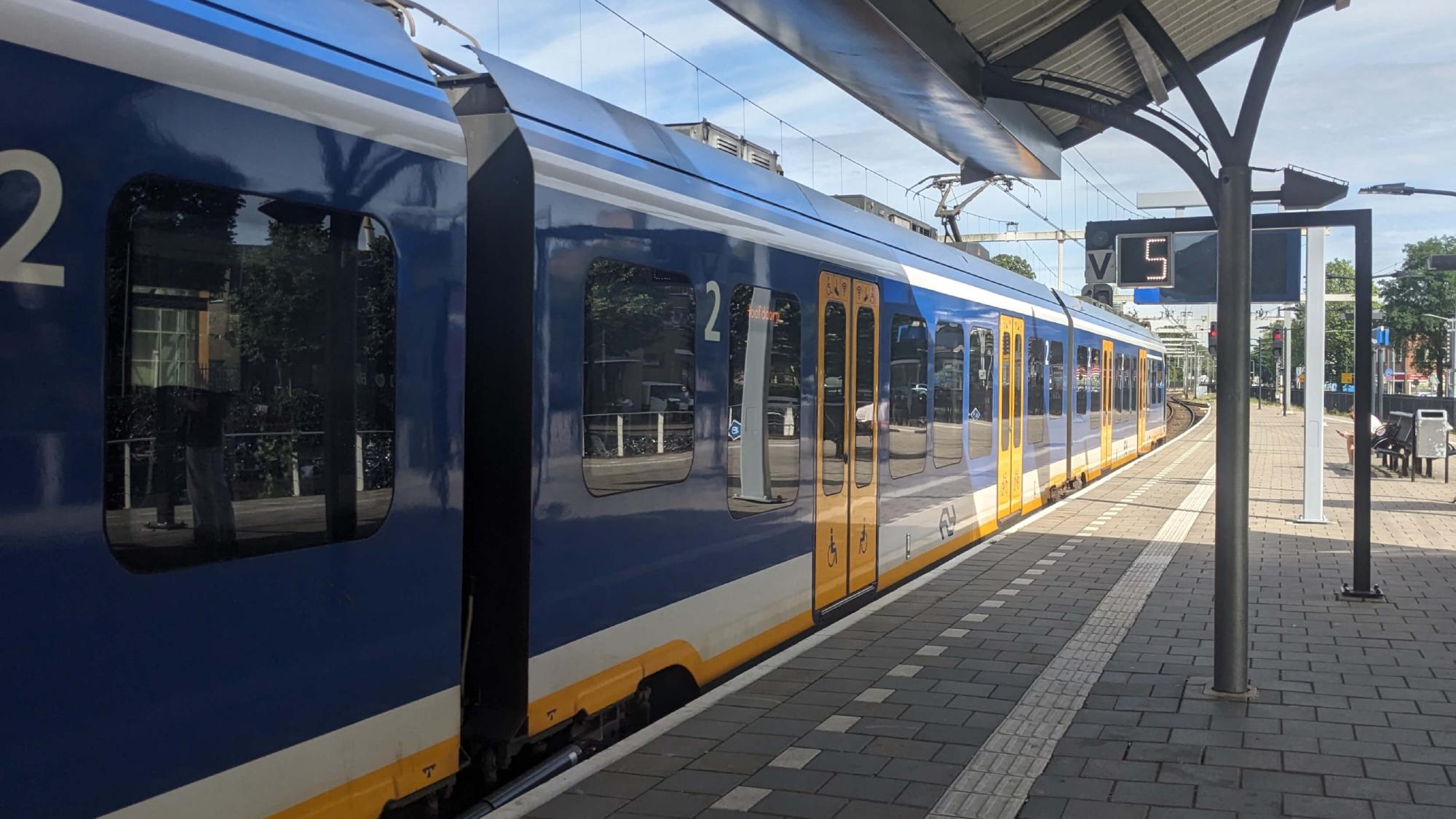Departure timers to improve level crossing safety
Posted: | Tags: transport train
The Netherlands has a fairly large and busy railway network with close to 400 passenger stations on 3000 line kilometres and with its largest operator, NS, transporting over 1 million passengers per day. Where rail meets road there are over 2000 crossings throughout the country. That comes out to a crossing every 1.3 kilometres on average.1
Given the high density of rail traffic and the number of level crossings, the safety of road and rail users is important. The Dutch Safety Board has said taking into account the volume of traffic on both rail and road, number of level crossings and casualties the Netherlands fairs well compared to 25 other European countries. That being said there’s always room for improvement and efforts have been made to reduce the number of casualties most notably in the form of two programs, the LVO and NABO.
Landelijk Verbeterprogramma Overwegen (LVO), or the National Level Crossing Improvement Programme, focuses on protected crossings and was launched in 2013. The goal of this program is to create and improve warnings of an approaching train to road users, prevent crossing while the barriers are in operation through supervision, increase enforcement and reduce wait times to prevent stranded road users between barriers. The second program, Niet Actief Beveiligde Overwegen (NABO), is targeted at unprotected crossing triggered after a collision in Winsum followed by two more in Volaan between 2012-2016. Through this program, by 2028 all remaining public unprotected crossings will be protected, removed or no longer publicly accessible. Combining the objectives of both programmes essentially boils down to protecting all remaining unprotected level crossings, making protected crossings safer, and reducing the number of crossings in total. That final goal could be achieved by ensuring no new crossings are built on new or existing lines, and replacing crossings with tunnels or bridges if the rail or road traffic increases.
A particular recent interest of mine was the departure timers (or vertreklight aftellen in Dutch) used at Station Hilversum and Hilversum Sportpark. These were installed to reduce the amount of time road users have to wait at level crossings around busy train stations, and they achieve this in an interesting way.
Typically when it’s time to depart the head conductor of the train will wait for the departure light to start flashing. The conductor then blows their whistle signalling it’s time for departure and with a turn of their key locks all doors apart from their own. After verifying that all doors are closed with no passenger in harms way, the conductor then locks their own door. A signal is then visible to the driver that the departure procedure is now complete. Using this method, if there is a level crossing right after a station, the departure light will only start to flash after the barriers are fully down, only then can the head conductor begin the procedure. This leads to a lot of wait time for road users at level crossings.
With the use of timers, a 15 second countdown begins when the the barriers start to close. This means the departure procedure described above can begin early while the barriers are closing, it’s only when the barriers are fully closed that the departure light flashes indicating the train can proceed. The YouTube video above from ProRail shows both approaches side-by-side.

Map showing level crossings near railway stations in the Netherlands.
In 2015 these timers were installed at Station Hilversum and Hilversum Sportpark to pilot the solution. In practice departures now occur 17 seconds earlier on average, and with positive feedback from staff the pilot is considered a success by ProRail and NS. In a 2016 press release ProRail has shared plans to extend the installation to 76 other stations out of the 200 or so stations in scope. To put this number into perspective, I’ve plotted every passenger station with a nearby level crossing of which I found 245 using OpenStreetMap data. Some might have been included accidentally if there’s a crossing nearby that is not accessible to the public but I’ve done my best to filter those out. Others might be there because they do have a public crossing directly before or after the station but do not have enough train traffic to warrant the timer, these stations have not been filtered out.
Given the initial success and plans to scale, the first installation reported by OV Magazine is at Vught station which was installed in December of 2016. The funds for the installation according to the magazine would be coming out of the A2 corridor project. In a document published by the House of Representatives of the Netherlands (Tweede Kamer de Staten-Generaal) in 2016 several crossings and stations along the Brabantroute between Venlo and Moerdijk will be modified. As part of the LVO program timers will be installed and the wait time at crossings will be reduced between 2016 and 2017. A reduction of wait times at crossings, according to ProRail, improves traffic flow and reduces the chances of road users trying to jump the barrier.
I’ve only noticed the timers at Hilversum and Hilversum Sportpark but will keep an eye out for them at other stations especially in the south of the Netherlands. Along with the video ProRail has created, I’ve also recorded a video at Hilversum to show how the timer and departure lights work together from the platform.
Values were taken from ProRail’s Key Figures, at 3030 line kilometres / 2281 railway crossings = 1.328. Numbers were taken for the year to date (August 2024). ↩︎